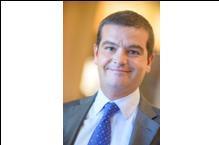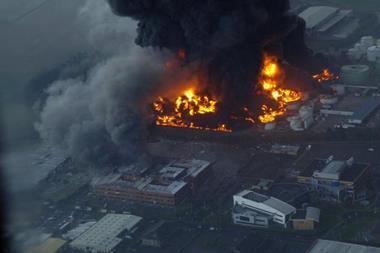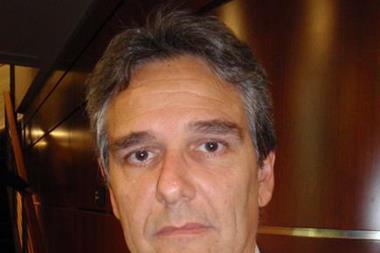Nathan Skinner quizzes one of Italy’s top risk managers on the challenges to his profession in a tricky economic climate
Risk management is not the best known of professions. Stop and ask someone in the street what a corporate risk manager actually does and it is likely you will be met with silence. Ask the same person what an accountant or lawyer does and they could probably give you a good idea.
This lack of awareness of the importance of risk management may well have been a major contributor to the banking crisis that has now dragged the world economy to the brink of the abyss. By blinding themselves to the risks they were stacking up, financial institutions got into serious difficulties. This is all the more worrying when you consider this is the sector that is supposed to have the most mature risk management.
A big part of the problem was to do with the perception of risk managers. Some parts of the business saw them as a hindrance rather than a help, and for that reason they were ignored or sidelined. Another danger was that the rest of the business saw them as custodians of the risk, which meant no one else had to worry about it.
That ignorance is partly a failure of organisational culture and partly the fault of risk managers themselves. They have not publicised their cause very well, which means some boards still do not understand exactly how they add value and help the business make money.
Strangely, the current crisis, while almost certainly a failure of embedding risk management, could provide the single biggest boost to its professional profile. Following funding problems with several large insurers, board rooms up and down the land have summoned the specialist knowledge of risk managers to explain the situation.
One man who has made it his personal quest to improve this image problem is Paolo Rubini. As vice chairman of the Italian risk management association (Associazione Nazionale dei Risk Manager), Rubini plays an important role in improving the standing of his chosen profession.
One of the goals of the national trade body is to equip Italian risk managers with the right skills and knowledge so they can make themselves count. ‘The challenge for Italian risk managers is to become a central reference point for all of their organisation’s risk management activities. To do this we have to be able to communicate and disclose the value of what we are doing,’ says Rubini.
There’s a dual purpose to his mission. Not only does he want to help risk managers help themselves, but by doing so he hopes to improve the overall standing of the profession in Italy. That could help bring about some important changes to the insurance market.
He thinks there is a serious shortage of insurance capacity for big commercial risks in the Italian market. ‘The number of insurers willing to write corporate risks in Italy is shrinking.’ Rubini says by improving the quality of risk management he can attract more big international insurers to the country. ‘The positive impact of risk management is improving the quality and transparency of commercial risks and convincing commercial insurers that it is worth using capital to underwrite them,’ he says. ‘This could help bring new capacity into the market.’
“We have to be able to communicate and disclose the value of what we are doing
Outside the profession, the positive effect of risk management is not something that is talked about all that often. Inside the risk industry people regularly refer to the upside.
Most of the European trade associations try hard to communicate the benefits risk management brings to an organisation. The Federation of European Risk Management Associations (FERMA), which represents the views of 16 countries in Europe, released a major benchmarking study this year. The research found that embedded risk management gives organisations the confidence to take on more risks. That can help organisations expand and do more business. Embedding risk management in corporate culture, however, is still very much an unfinished job.
There is also external pressure on companies to demonstrate good governance. Risk management is an important measure of this. ‘Investors are very interested in knowing how the company’s risk management is organised,’ adds Rubini. The rating agencies have also started taking it into account in their financial assessments, something they have done with financial services firms for some time.
Experience
As well as championing the cause of fellow professionals, Rubini is director of risk management for Telecom Italia, the telecommunications group. He has over 20 years of experience as a risk manager, but like many colleagues in Europe he began life as a broker.
Between 1980 and 1989 he worked for three Italian brokers, Schinasi, Nikols (now part of Aon) and Interbrokers, where he helped a range of businesses handle their own risks. In 1990 Rubini joined the Italian technology group Olivetti, where he put together his first multinational insurance programme.
When consolidation took hold of the communications sector in Italy in the late 90s, Olivetti took over Telecom Italia. Rubini moved over in March 2001 and was immediately faced with a massive project to centralise the group’s diverse risk transfer strategies. That meant moving all of the individual insurance policies for each of the companies in the group from a captive, which was sold, into the insurance market.
At the time there were around 40 different companies in Italy and 25 others abroad. Rubini managed to achieve savings by binding the individual policies together into corporate insurance programmes by business line. Nevertheless, it was a gruelling task. He says his main challenges were educating the workforce, providing good quality service and establishing a set of consistent management policies. Claims were handed over to a broker, and that left Rubini free to concentrate on the group’s risk management activities. His main task today is to represent the risk management picture to the board and other stakeholders. He finds this very hard. ‘It is difficult to achieve a consistent representation of all the risk management activities done by the single units.’
Never in his long career has Rubini seen events unfold as dramatically and devastatingly as the current financial crisis, which has sparked a global economic slowdown. At the height of the crisis, overnight and without warning, one of the financially strongest insurance companies in the world, AIG, was made to look like one of the feeblest.
“Prices will not be dropping any more
He is keen to play down the impact of that single incident on the market. ‘It affects us. But we receive daily information from AIG saying that the company is sound and they are paying claims. AIG is still on the market and they are very aggressive now. AIG is apparently alive and willing to increase its presence on the Italian market.’
‘On the other hand, we need to be prepared to have a way out if something should happen. Not only with respect to AIG but to other insurers as well,’ he adds, reiterating that new capacity is needed.
On the culpability of the rating agencies, he says: ‘They have a large responsibility for this.’ Risk managers rely on the rating system because they like to include in the wording of their policies a clause that gives them the right to switch providers if their insurer is downgraded. ‘We need to discuss if that information can be relied upon.’
The crisis grew out of the financial sector, where some institutions got involved over their heads with complex and opaque debt instruments. Asked what he thinks of their risk management, Rubini says: ‘I don’t know how things were done in the banks. But the final responsibility for the risk sits with the top management. There were clearly controls that were lacking or not used properly and ultimately their risk strategy was wrong.’
And now the rest of the world is left to pay the price. Tighter credit and much harsher economic conditions have coincided with the end of a soft cycle, making life doubly difficult for risk managers. After a good few years of softening rates the market is in for a bumpy readjustment. Rubini expects the hardening market to start taking effect towards the middle of next year. ‘It won’t start before the end of the year, it will start later,’ he says. ‘Prices will not be dropping any more.’
A new environment
Overall, Rubini is positive about the future. He thinks the new operating environment is going to make the role of the risk manager even more important. The risk manager has a key role to play in assuring banks that when they lend to a company, their money is going to be safe. ‘Companies may sooner or later be evaluated by the financial markets with respect to their risk profile,’ he says. ‘The existence of a strong risk management function will entail most probably the possibility of gathering finance at a lower cost. We are becoming part of the standing of the company and part of the rating of the company.’
Another area where risk managers can prove their worth is by speeding the payment of claims. Restricted credit could be an existential risk for some companies. ‘This is a challenge for risk managers as well. They need to be able to provide the capacity in the quickest possible way when a claim occurs, because that capital could be vital for the survival of the company. That makes them much more important than they used to be.’
There are other risks in the slowdown that companies should be aware of. The Organisation for Economic Cooperation and Development says the number of jobless could rise to 42m in the developed world by 2010. ‘The threat of lay-offs brings with it a big cultural risk, because you can lose experts and human capital. The risk is that you lose control of your processes because you lose the people heading those processes.’
Postscript
Nathan Skinner is associate editor, StrategicRISK




















No comments yet